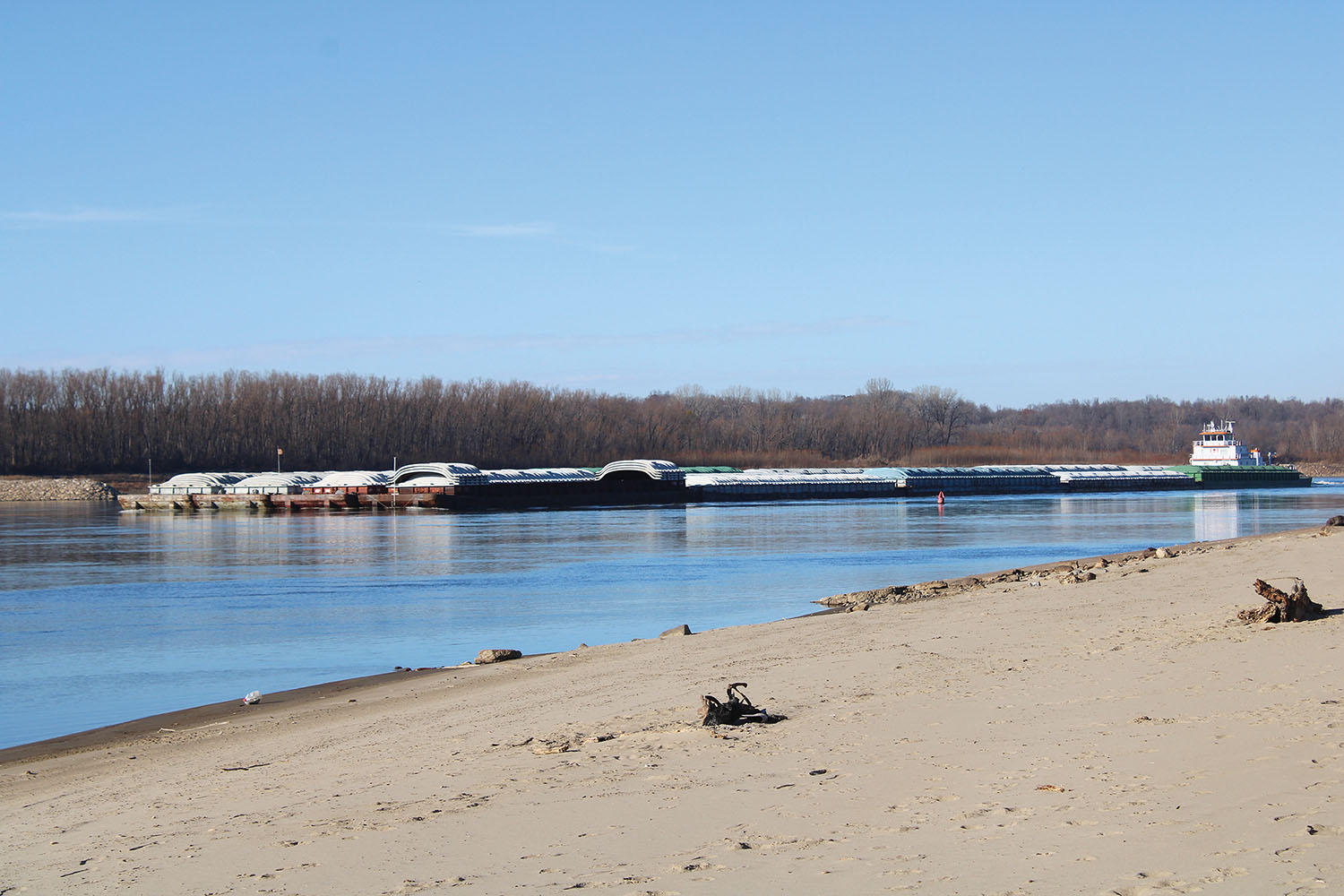A little rain falling at the right time and in the right place helped to slow a predicted sharp decline on the Upper Mississippi, but it wasn’t able to stop it altogether.
While initial forecasts called for the river to reach –5 feet in St. Louis on December 13, which would have put it in the top six lowest levels since the beginning of record-keeping in the 1860s, the rain held the river level to –0.69 feet instead.
However, forecasts continued to call for lower stages. The 28-day forecast issued December 13 predicted a fall to –3.2 feet in St. Louis by December 20 and then continuing to fall, to –4.7 feet by December 27 and as low as –5.4 feet by January 10, the farthest the Corps of Engineers’ long-range forecast for the Upper Mississippi River goes out. The record is –6.2 feet on January 16, 1940.
Bernie Heroff, chairman of the River Industry Action Committee (RIAC), the industry group that works closely with the Corps of Engineers and U.S. Coast Guard to manage the Upper Mississippi River during times of extreme conditions, said no groundings or shutdowns had been reported.
Heroff said he has confidence that the Corps of Engineers will have the 9-foot channel prepared for a stage of –5.5 feet in St. Louis before the river falls to near that stage. Small amounts of precipitation can also make a big difference at these low stages, he said, and dipping lower than –5.5 feet in St. Louis statistically happens only rarely. The last time the river fell below –5 feet in St. Louis was in 1989, when it reached –5.32 feet.
Dredging remains ongoing, with the dredge Potter working at Upper Mississippi Mile 129, the Goetz at Upper Mississippi Mile 159 and the Pathfinder and mechanical plant at Upper Mississippi Mile 184, the entrance to Chain of Rocks Canal.
This year’s low-water conditions have persisted longer and have been more severe, he noted.
The river stages stayed between –3 and +4 feet in St. Louis between August 1, 2022, and February 11, then stayed above 4 feet until June 13, when it began falling.
“This year in St. Louis we’ve been below zero most of the time since August 24,” Heroff said.
It isn’t unprecedented to have low water two years in a row, however. Heroff recalled that in 1988 and 1989, river stages were low in St. Louis, and in 1987 and 1988 they were very low on the Lower Mississippi at Memphis, Tenn.
Randy Chamness, cochair of the Lower Mississippi River Committee (LOMRC), the industry group working with the Corps and Coast Guard during extreme weather conditions on the Lower Mississippi, said conditions were much improved following rain over the December 9-10 weekend. Forecasts called for the Lower Mississippi to crest at –3.8 feet December 18 in Memphis, Tenn., which Chamness called “the best stage we’ve seen in months.” A slow fall off was predicted afterward.
The rainfall allowed the controlling draft and maximum tow sizes both to be increased on the Lower Mississippi.
“Things are much better than what they have been,” Chamness said.
Starting December 9, tows could draft up to 11 feet, 6 inches.
Tow sizes were increased December 13 to up to 7 barges wide southbound from Cairo, Ill., but with a caveat. Those increasing to seven wide still had to maintain a maximum draft of 10 feet, 6 inches. Only those six wide and fewer could use the 11-foot, 6-inch draft.
“We’re hoping for rain because everything is predicated on rainfall,” Chamness said. “We’re hoping to have a system every seven to 10 days because that keeps us moderated. We’re very happy to have what we have right now.”
Caption for photo: Tennessee Valley Towing’s mv. Nick G. Buford travels downbound in a bend just upstream of the Thebes, Ill., railroad bridge, Upper Mississippi River 43.7, on December 12. (Photo by Shelley Byrne)




